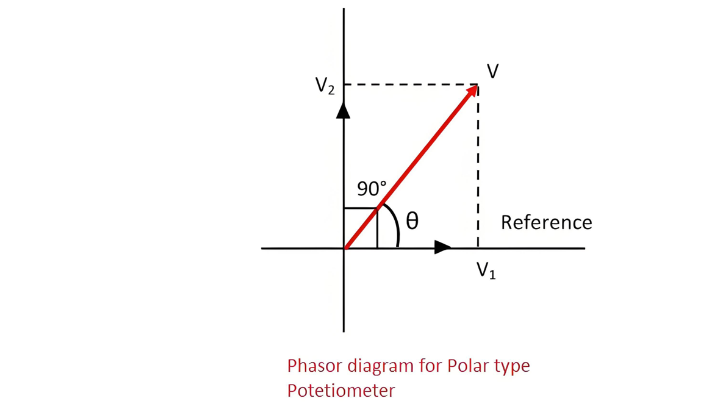A potentiometer that measures the phase and magnitude of an unknown electromotive force (emf) by comparing it with a known emf is called an AC potentiometer. The working principle of an AC potentiometer is the same as that of a DC potentiometer, that is, the unknown voltage is determined by comparing it with a known voltage. When the two are equal, the galvanometer indicates the null point, and thus the value of the unknown emf is obtained.
The operation of an AC potentiometer is more complicated compared to that of a DC potentiometer. The following are important factors that must be considered for its operation:
- In an AC potentiometer, the frequency and waveform of the current must be the same as those of the voltage being measured. Therefore, in an AC potentiometer, the potential is derived from the same source as the current or voltage being measured.
- Non - inductive elements are used to make the sliding wire and resistance coil of the AC potentiometer, which reduces reading errors.
- The readings of an AC potentiometer are affected by external magnetic fields, so these fields are eliminated during measurement.
- The power supply source should be sinusoidal and free of harmonics, as the presence of harmonics makes it difficult to achieve balance.
Types of AC Potentiometer
AC potentiometers are classified according to the values measured by their dials and scales. AC potentiometers can be broadly classified as follows:
Polar Type Potentiometer

Coordinate Type Potentiometer
The coordinate type potentiometer is equipped with two scales, which are used to read the in-phase component V1and the quadrature component V2 of the unknown voltage V. These two voltages are 90° out of phase with each other. The potentiometer is designed in a way that it can read both the positive and negative values of V1 and V2, and it can cover all angles up to 360°.
Applications of Potentiometer
The AC potentiometer finds extensive applications in various fields. Some of its key applications are elaborated in detail below:
1. Voltmeter Calibration
The AC potentiometer is capable of directly measuring low voltages of up to 1.5V. For measuring higher voltages, it can either utilize a volt box ratio or employ two capacitors connected in series with the potentiometer.
2. Ammeter Calibration
The measurement of alternating current can be accomplished by using a non-inductive standard resistor in conjunction with the potentiometer.
3. Wattmeter and Energy Meter Testing
The testing circuits for wattmeters and energy meters are similar to those used in DC measurements. A phase shifting transformer is connected to the potentiometer to adjust the phase of the voltage relative to the current. In this way, the voltage and current can be varied at different power factors.
4. Measurements of Self Reactance of a Coil
A standard reactance is placed in series with the coil whose self-reactance needs to be measured.
The AC potentiometer plays a crucial role in engineering measurements where an accuracy ranging from 0.5% to 1% is indispensable. It is also employed in scenarios where a voltage needs to be decomposed into two components. This instrument delivers highly accurate results in magnetic testing and the precise calibration of instrument transformers, making it an essential tool in these specialized areas of electrical engineering.
In this type of potentiometer, the magnitude of the unknown voltage is measured from one scale, and its phase angle is directly read from a second scale. The setup allows for the reading of phase angles up to 360°. The voltage is read in the form of V∠θ.

